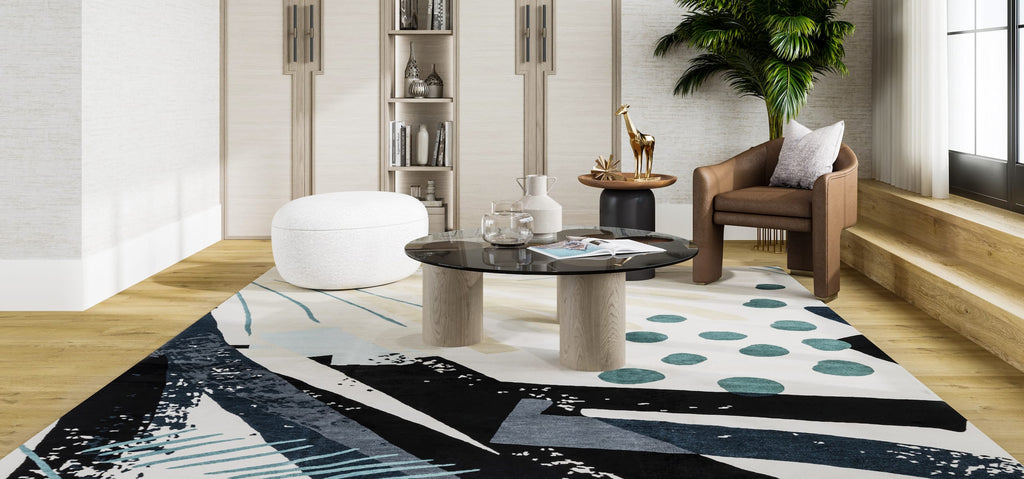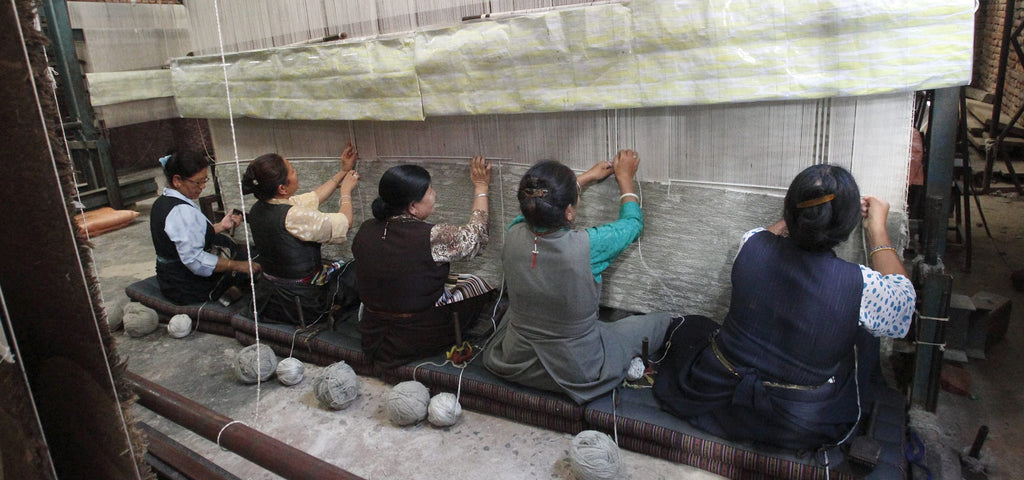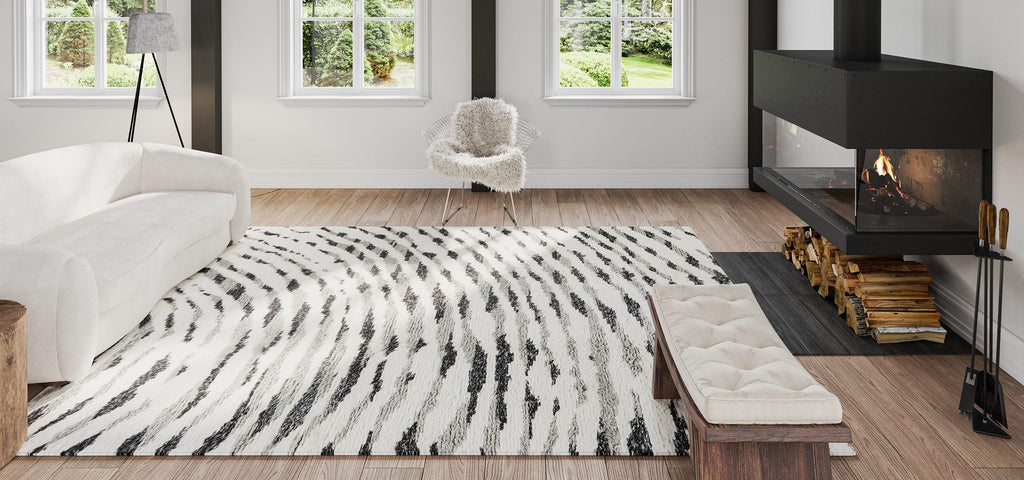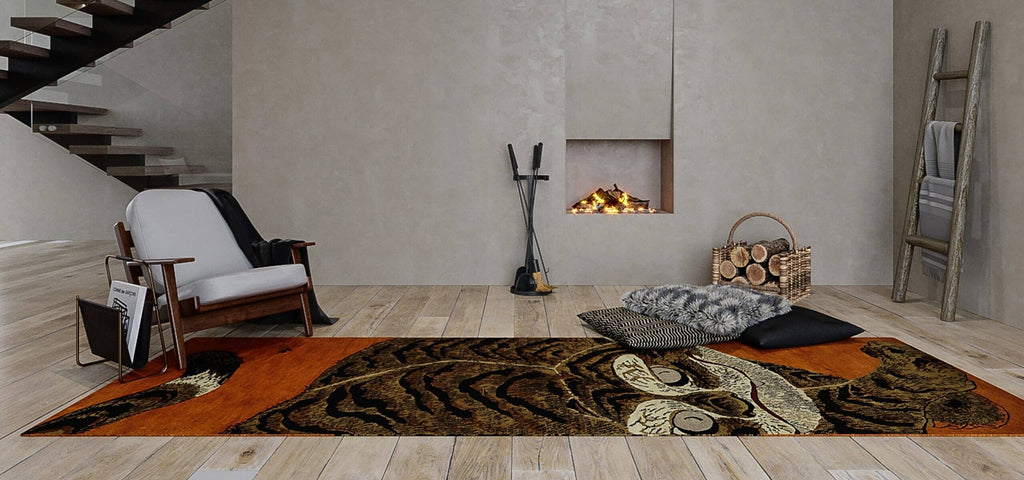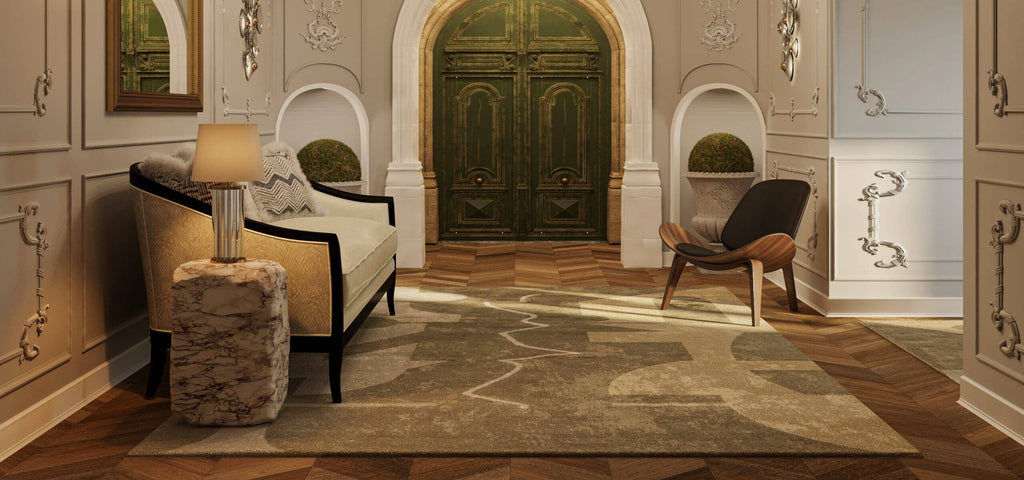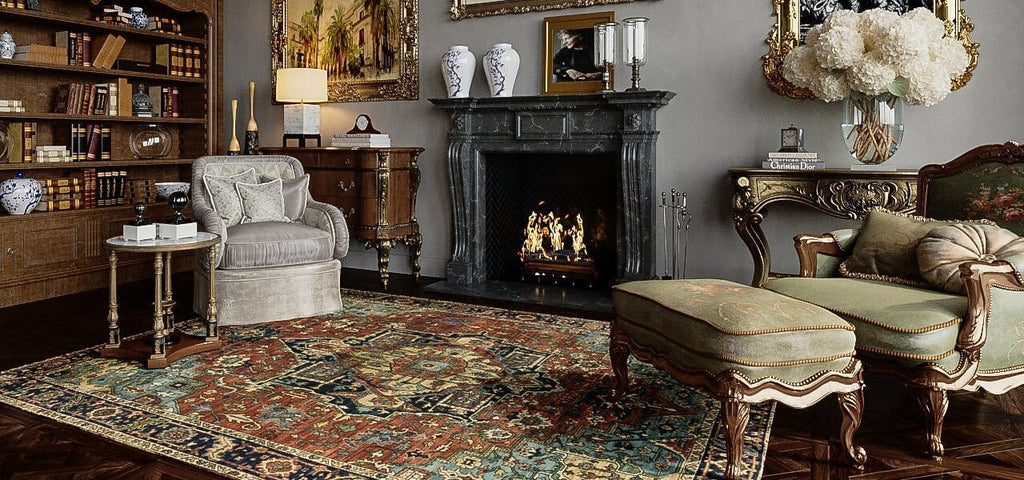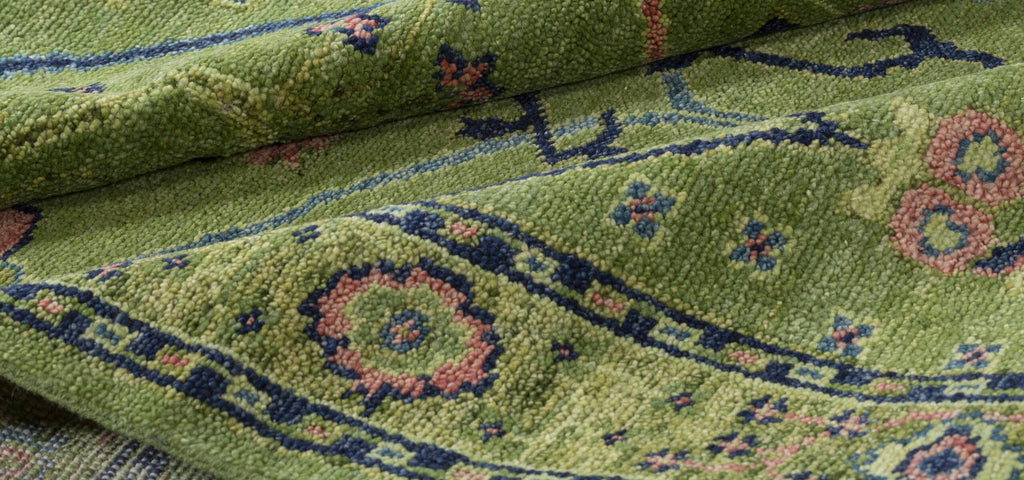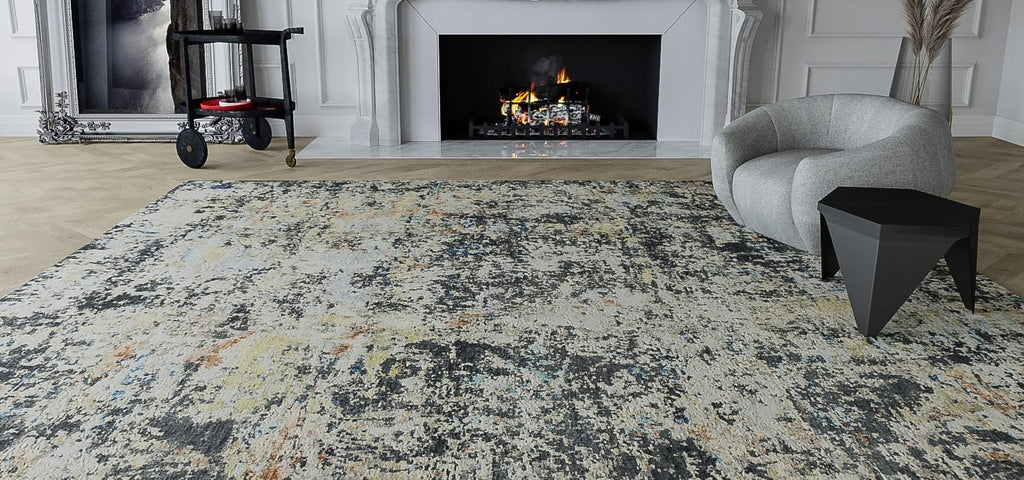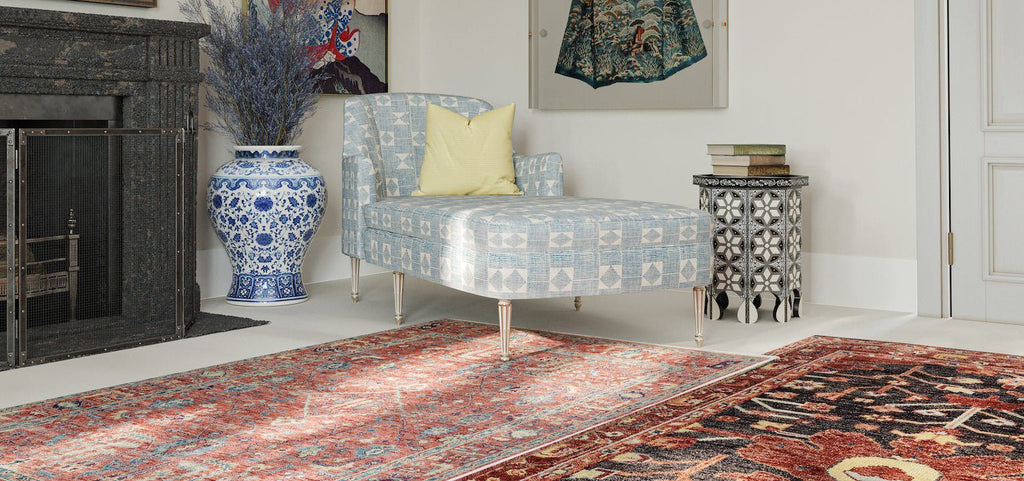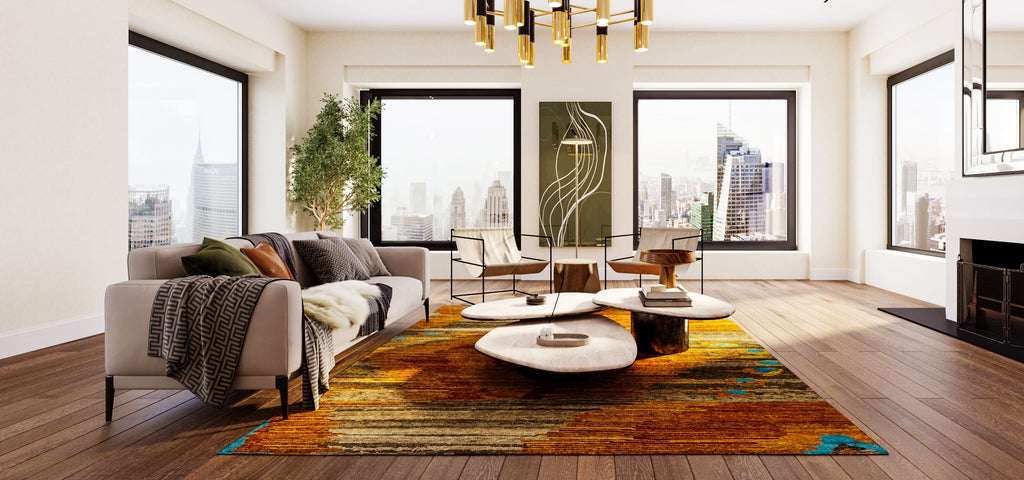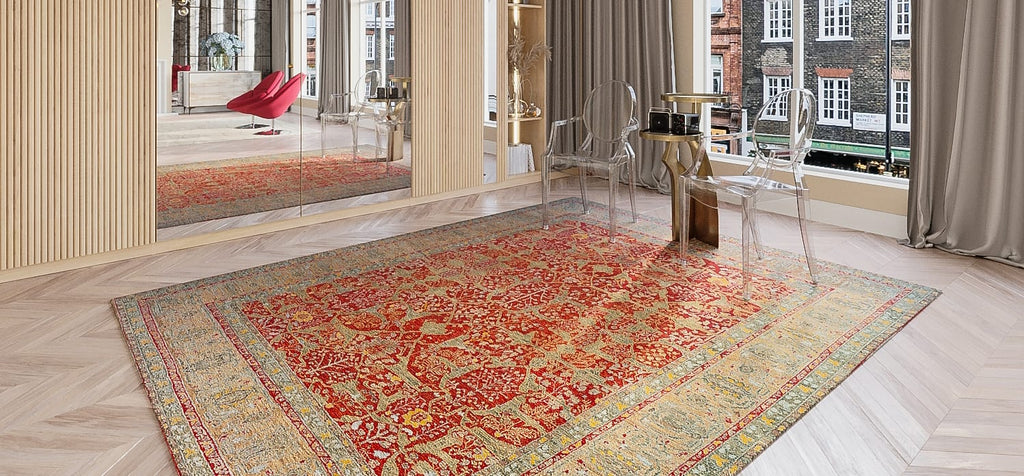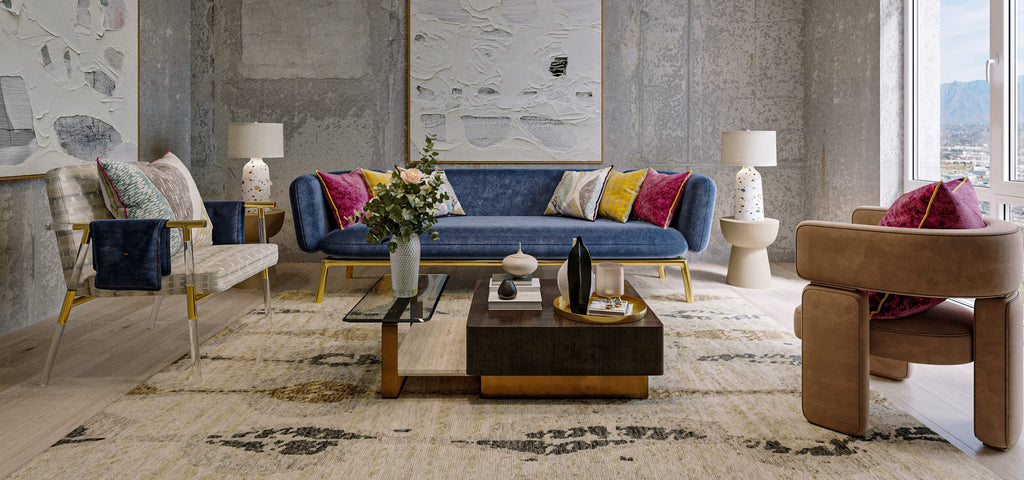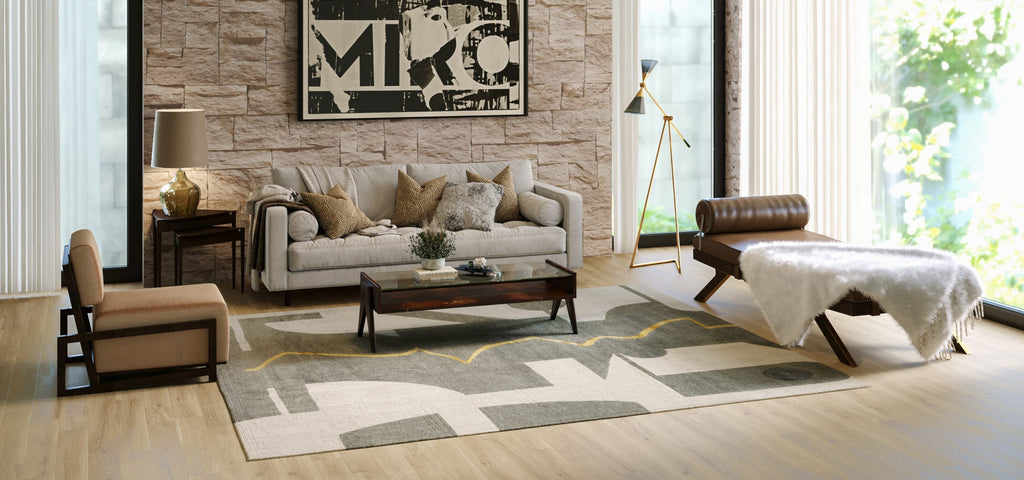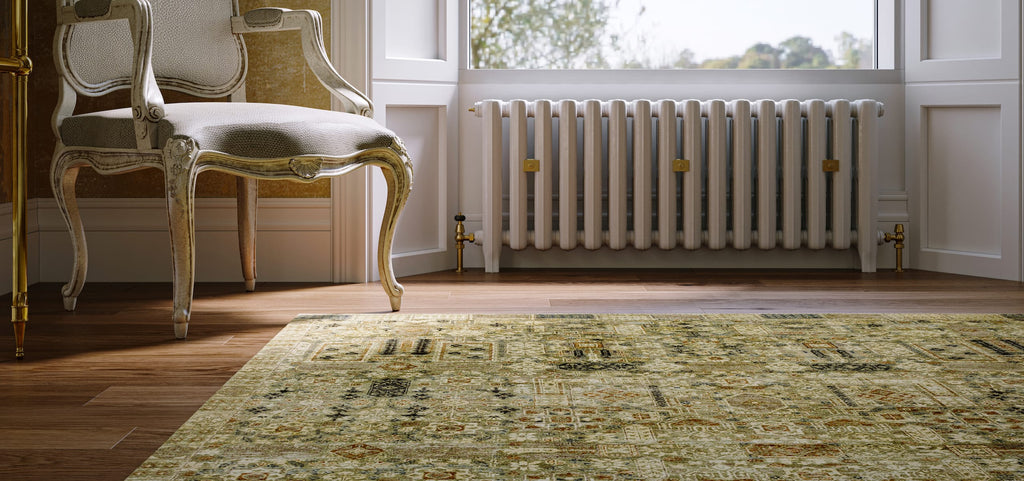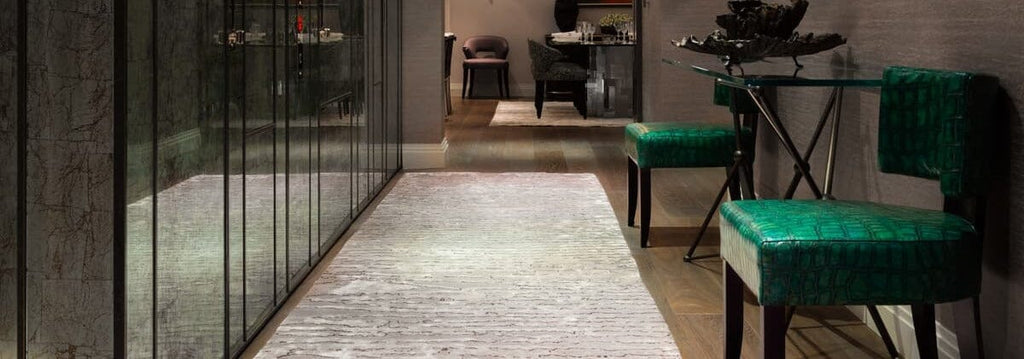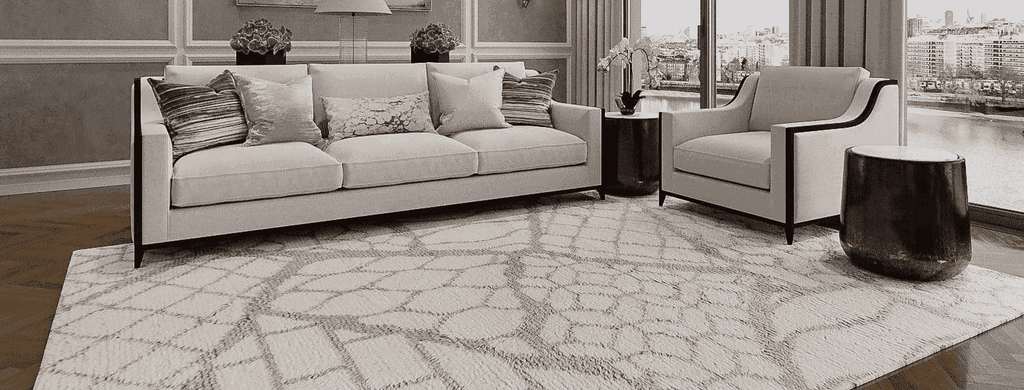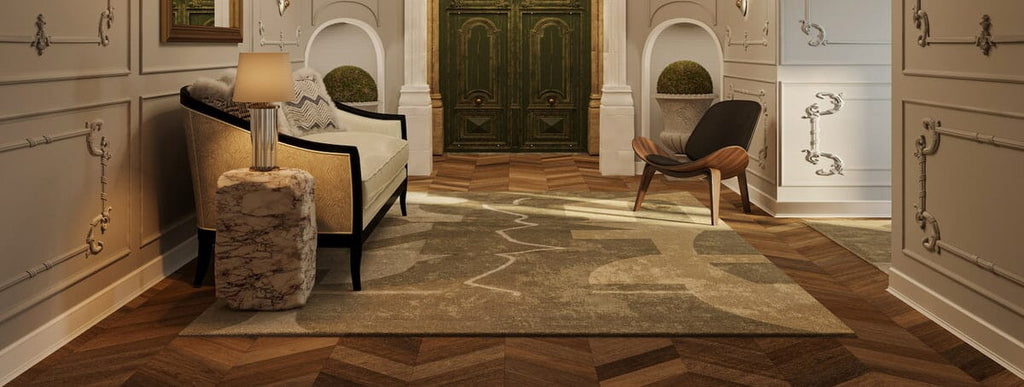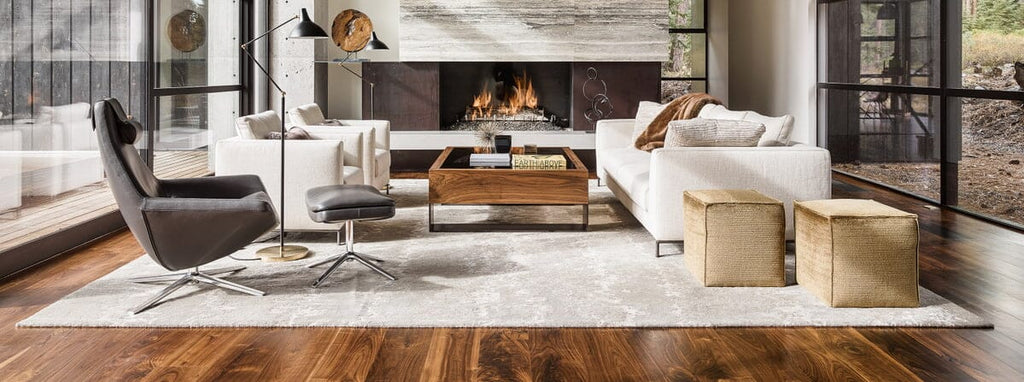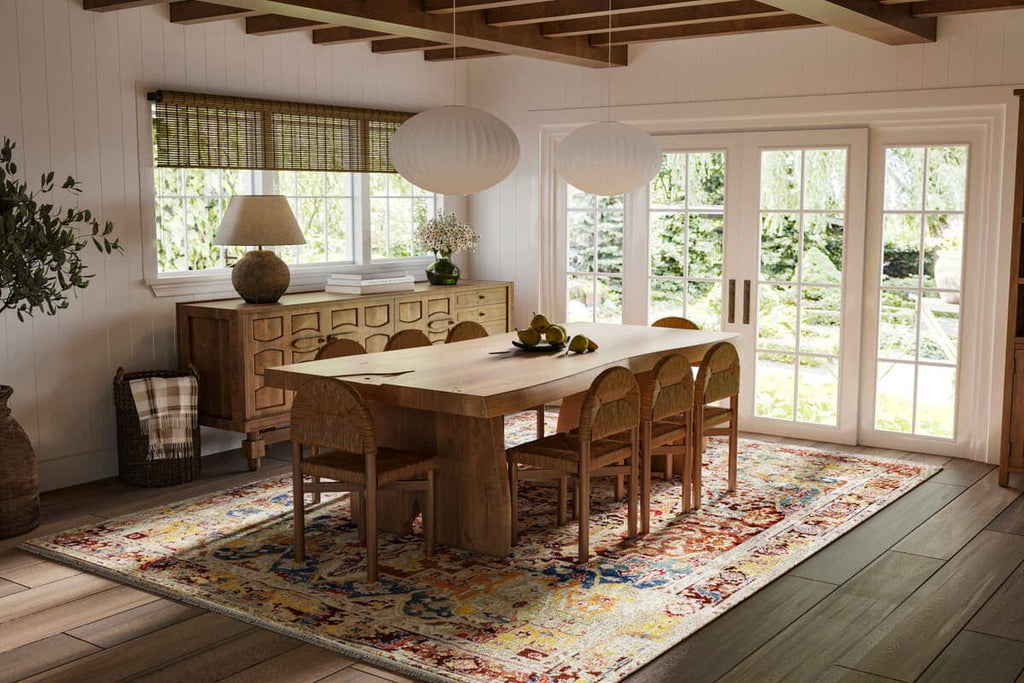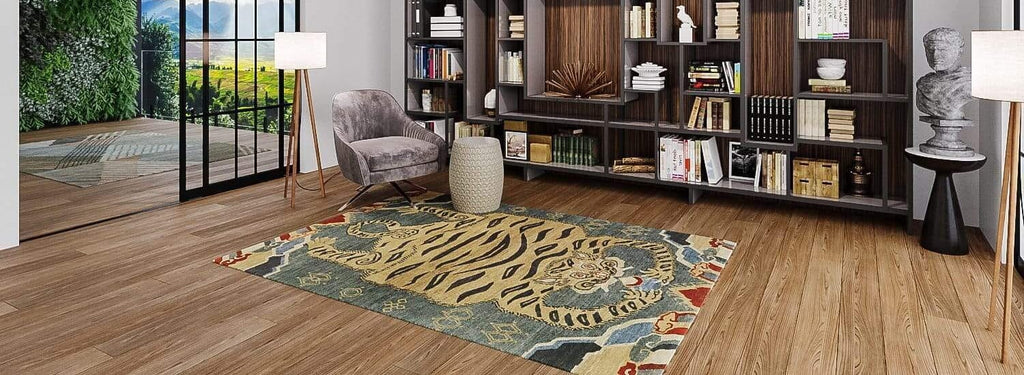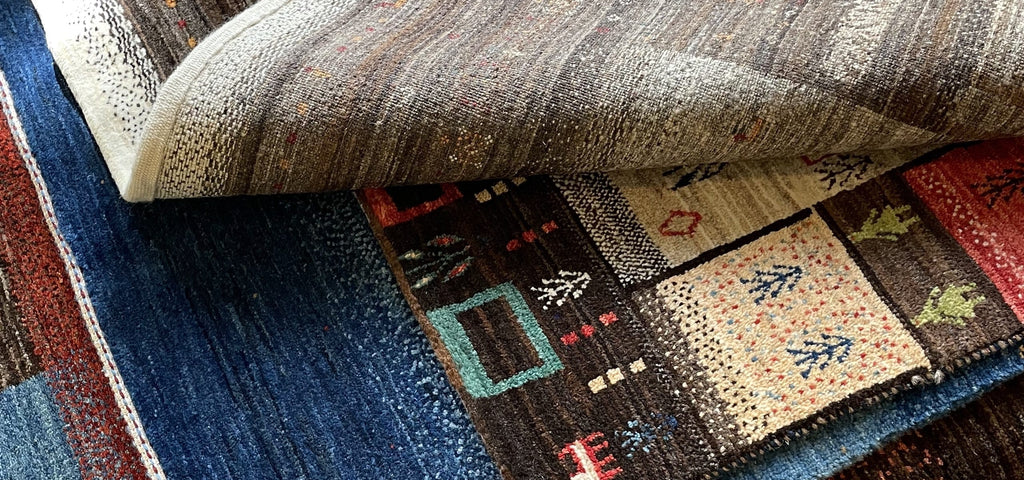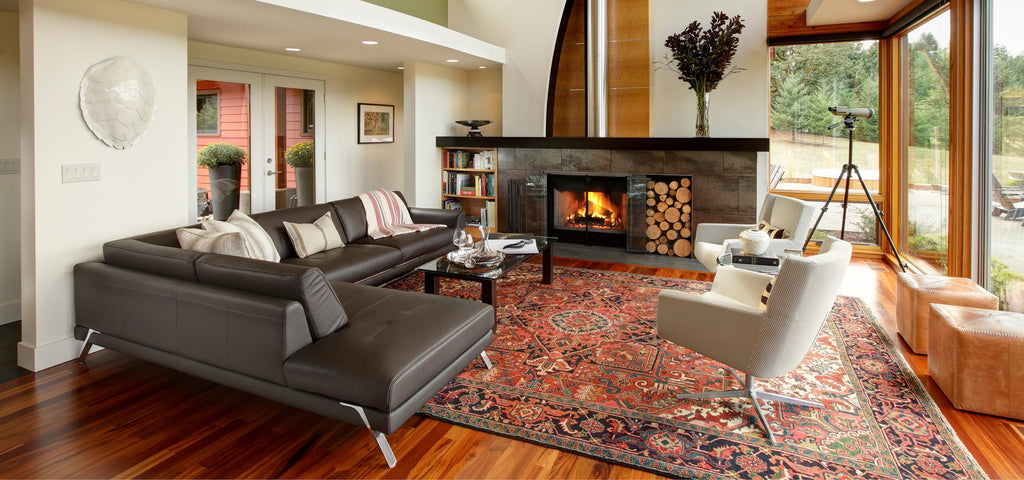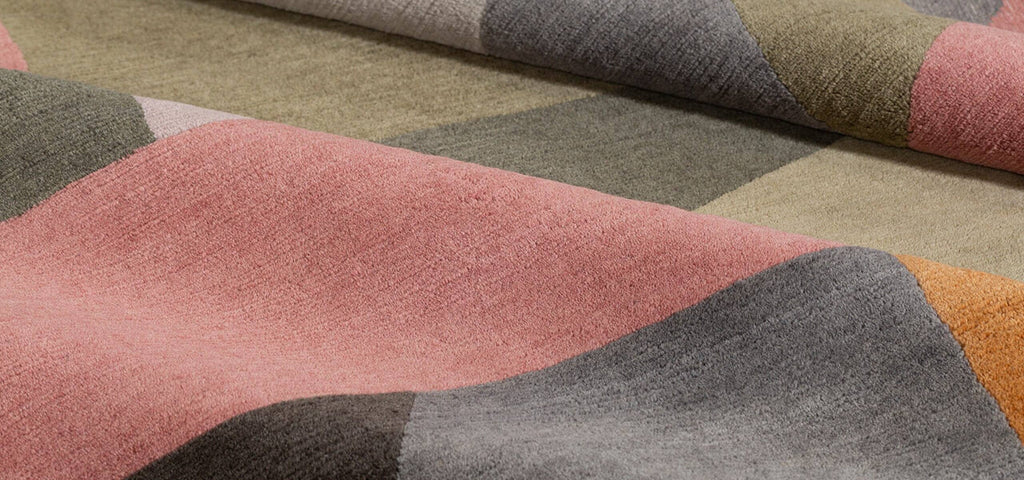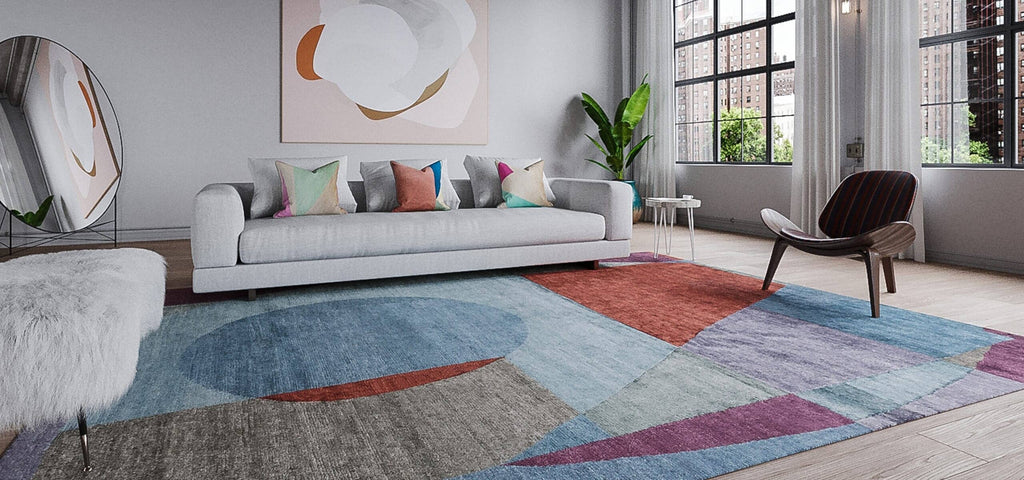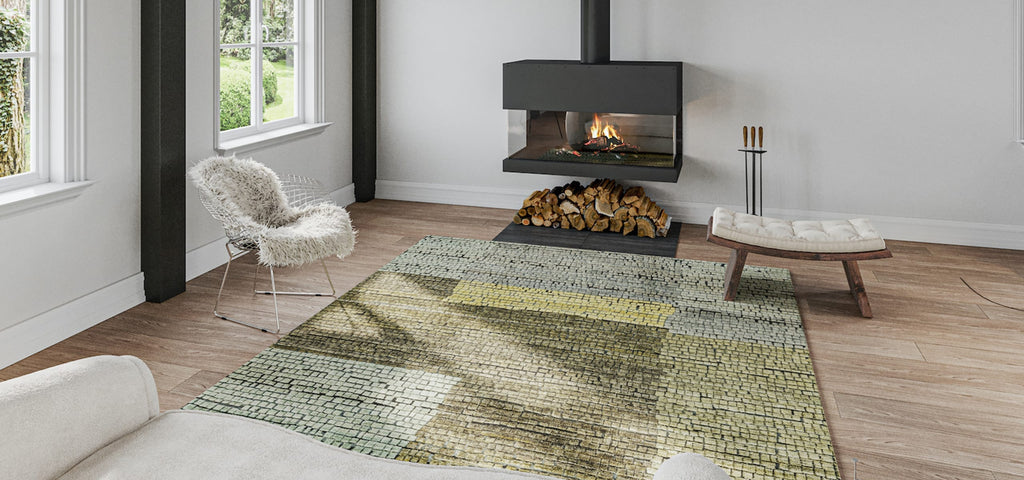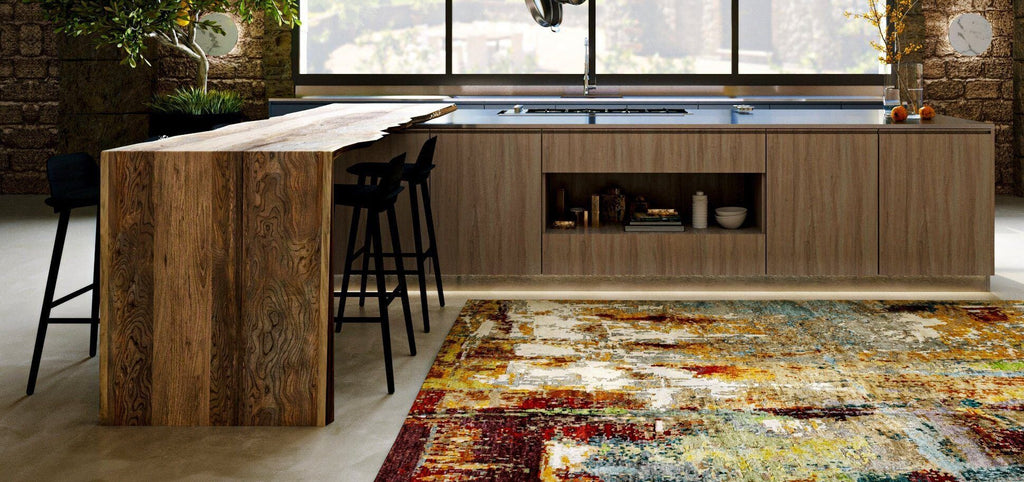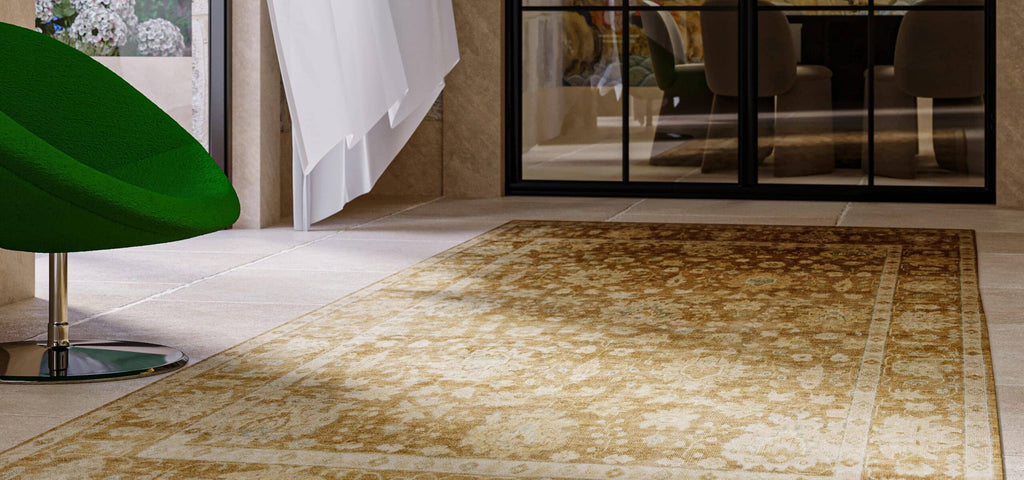Rug Material: Wool
Known for its soil and stain resistance, long-term appearance retention, color retention, and texture recovery, wool is popular for its practicality and also provides numerous environmental benefits. It is flame-resistant, mildew resistant, and water repellant.
Wool is by far the safest choice in homes, hotels, offices, and commercial spaces to guard against the danger of fire, as it is the only fiber that naturally resists flaming. Unlike many man-made fibers, which often melt and stick when on fire, wool smolders or chars instead of bursting into flame. Wool normally self-extinguishes when the flame source is removed.
Not only does wool repel water, it can also hold moisture without mildewing. This is an important quality since mold and mildew are considered one of the most detrimental irritants to the immune system. Wool naturally helps stabilize the relative humidity in buildings by absorbing or releasing moisture.
We do not bleach or scour our wool, or strip it of its lanolin (a natural soil and stain inhibitor that we covet and preserve by never compromising the basic character of the wool fibers by bleaching or stripping). This allows our rugs to remain inherently soil and stain resistant.
Wool is non-allergenic and has been proven hygienically safe in medically sensitive areas. Wool does not promote the growth of dust mites or bacteria, and actually contributes to air purity in buildings by absorbing polluting gasses. Walking safety is also assured by its non-slip and non-abrasive characteristics. As an additional bonus, wool offers superior sound and heat insulation properties
Rug Material: Silk in residential or low traffic settings
Tufenkian's 100% wool Shakti quality has achieved successful testing results, making it perfectly suitable for heavy use in residential settings. Silk is one of the strongest natural fibers, and the silk we use in our Tibetan carpets is stronger and more durable fiber than any low or medium grade wool. Silk is not as elastic as wool nor is it as resistant to soiling or staining when compared to high grade wool. In addition to the durability of the yarn, the elasticity and the high content of lanolin in natural wool offer an easily maintained and cleanable carpet.
Rug Material: Silk in commercial or extra high traffic settings
Patterns that contain more than 15% silk and/or have significant and solid areas of silk will require regular maintenance and vacuuming to maintain consistent appearance. In areas where the rugs may be subjected to excessive traffic, an all-wool would be best suited. Tufenkian cannot accept responsibility for any excessive wear and tear on the carpets in such areas should the silk content represent more than 15% of the overall content of the rug.
Rug Material: Bamboo Silk
Bamboo silk is similar to traditional silk in look and feel, but is a more sustainable and lower cost alternative. Since we began creating a high quality Bamboo Silk for our products, we are now using it quite extensively. It is fairly new to the market and we are one of the most prominent users of it in handmade carpets. With a strong focus on social and environmental sustainability, bamboo silk provides Tufenkian with a sustainable product and allows us to give more back to the communities we work in.
Bamboo silk is a type of viscose. The typical viscose found on the market today is made from wood cellulose, and Bamboo silk is made from bamboo cellulose. In both cases, the base material is treated so that it becomes a paste which is then combined with other ingredients, extruded, and dried to produce the fiber. Although both are called "viscose," because of the different base material from which they are made, the two have different performance characteristics, and bamboo’s are quite superior.
We arrived at the decision to use bamboo silk after vigorous testing and comparisons to alternative products to ensure we were maintaining the highest quality for our rugs. Since we began using it years ago, we have sold hundreds of carpets with significant percentages of this fiber, and have found no problems with durability or cleaning.
In terms of performance, our Bamboo Silk tests 3.7 out of 5.0 (5.0 being superior) for stain resistance after cleaning. For comparison, our unbleached Tibetan wool tests 4.6 out of 5.0.
To clean our bamboo silk, it is best to use a professional. However, in times when a quick response is needed, gently blot (do not scrub) the soiled area using a clean cloth or paper towel to absorb liquids from spills, then air dry (heat drying should be avoided).


